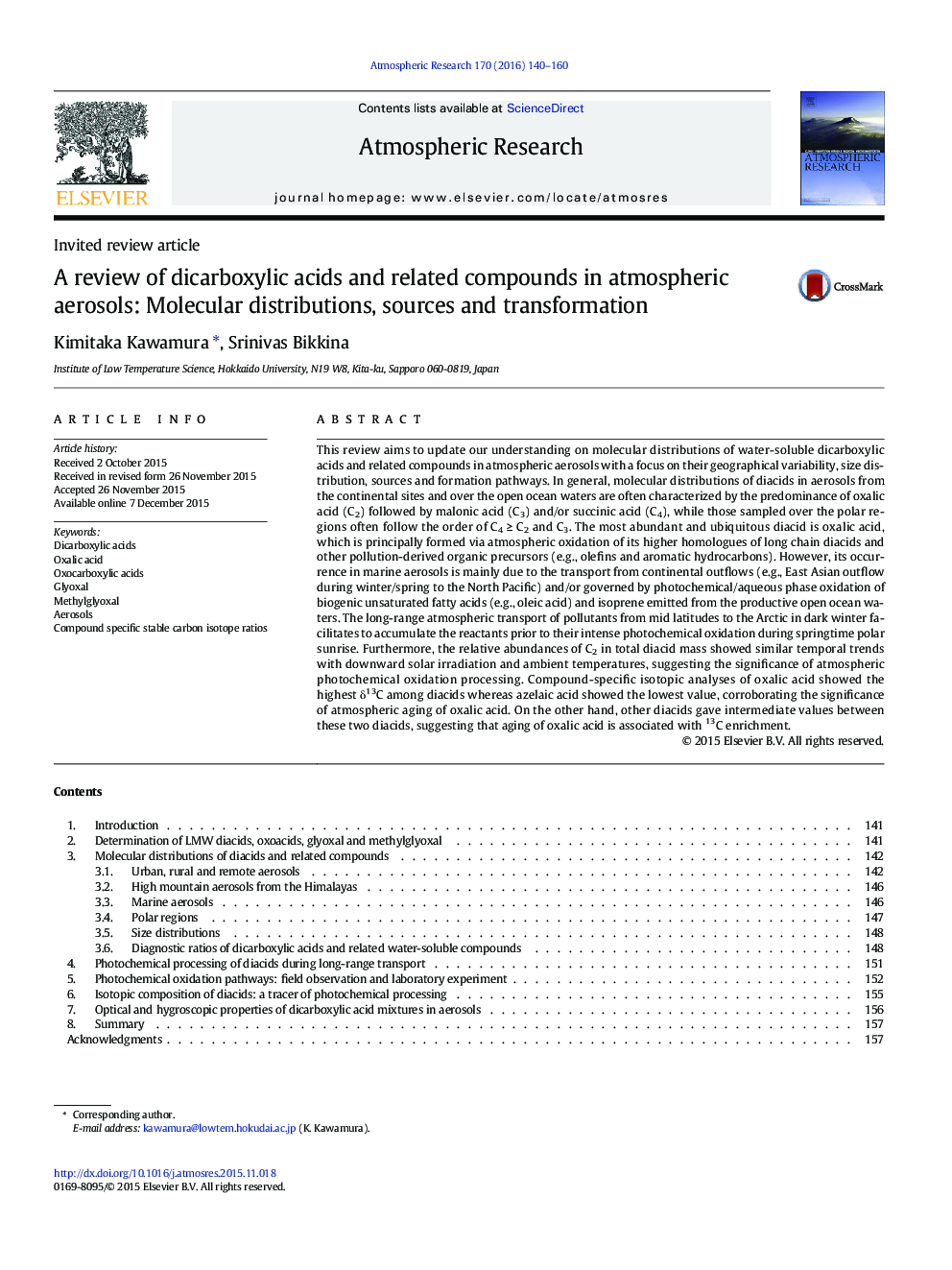| کد مقاله | کد نشریه | سال انتشار | مقاله انگلیسی | نسخه تمام متن |
|---|---|---|---|---|
| 4449590 | 1620507 | 2016 | 21 صفحه PDF | دانلود رایگان |

This review aims to update our understanding on molecular distributions of water-soluble dicarboxylic acids and related compounds in atmospheric aerosols with a focus on their geographical variability, size distribution, sources and formation pathways. In general, molecular distributions of diacids in aerosols from the continental sites and over the open ocean waters are often characterized by the predominance of oxalic acid (C2) followed by malonic acid (C3) and/or succinic acid (C4), while those sampled over the polar regions often follow the order of C4 ≥ C2 and C3. The most abundant and ubiquitous diacid is oxalic acid, which is principally formed via atmospheric oxidation of its higher homologues of long chain diacids and other pollution-derived organic precursors (e.g., olefins and aromatic hydrocarbons). However, its occurrence in marine aerosols is mainly due to the transport from continental outflows (e.g., East Asian outflow during winter/spring to the North Pacific) and/or governed by photochemical/aqueous phase oxidation of biogenic unsaturated fatty acids (e.g., oleic acid) and isoprene emitted from the productive open ocean waters. The long-range atmospheric transport of pollutants from mid latitudes to the Arctic in dark winter facilitates to accumulate the reactants prior to their intense photochemical oxidation during springtime polar sunrise. Furthermore, the relative abundances of C2 in total diacid mass showed similar temporal trends with downward solar irradiation and ambient temperatures, suggesting the significance of atmospheric photochemical oxidation processing. Compound-specific isotopic analyses of oxalic acid showed the highest δ13C among diacids whereas azelaic acid showed the lowest value, corroborating the significance of atmospheric aging of oxalic acid. On the other hand, other diacids gave intermediate values between these two diacids, suggesting that aging of oxalic acid is associated with 13C enrichment.
Journal: Atmospheric Research - Volume 170, 15 March 2016, Pages 140–160